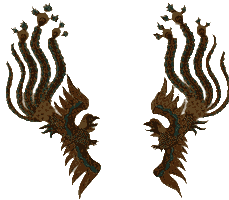Competition Maneuvers of Keluarga Pencak Silat
Nusantara (X)
Rapid Journal, Vol. 9, No. 2 (Book 32, 2004: 44-45)
© O'ong Maryono
www.kpsnusantara.com
Following the description of the ninth sequel of competition maneuvers of KPS Nusantara in the previous issues, here we devote attention to the tenth sequel or jurus pertandingan X as performed by Abdul Karim Jabad, national coach and trainer KPS Nusantara at the Ninoy Aquino Stadium, Manila. Once more, we need to remind ourselves that in spite of the many similarities in standing positions, the movements’ order results in different degrees of difficulty.
Defense and Attack Tactics
The pesilat stands in position XII (fig. 1) before moving to the so-called sikap bandul buka standing position (fig. 2) to signal that the pesilat is ready to fight. From this position the pesilat enters into action by slowly opening the right palm and the left palm, the right leg pulled back in the buang liuk standing position (fig. 3) as to invite the opponent to attack. Subsequently, the pesilat steps forward with his right foot and moves closer to the opponent with the left hand to protect the ribs (sikap V: fig. 4), before attacking with a left hand attack to the side (pukulan gebang: fig. 5).
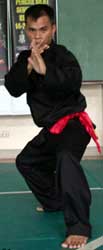 |
 |
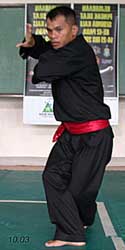 |
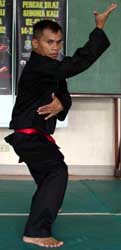 |
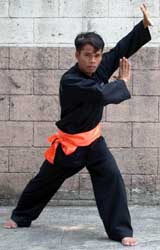 |
fig.1 |
fig.2 |
fig.3 |
fig.4 |
fig.5 |
The pesilat advances with a left punching long hook (ayun) to the temple of the opponent (fig. 6) followed immediately by a rapid landing of the right foot and hand attack to the opponent’s leg (fig. 7). In closure, the striking pesilat steps back two times, turns into a flaying eagle standing position (elang melayang: figs. 8) and goes back to stand-by position (sikap siap: fig. 9) in preparation for the next pattern of movements to be discussed in the next issue.
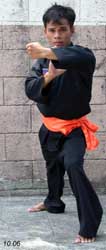 |
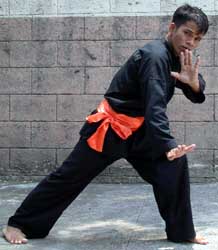 |
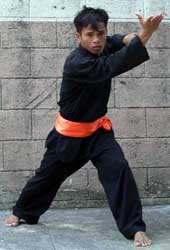 |
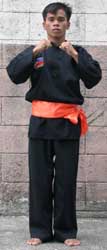 |
fig.6 |
fig.7 |
fig.8 |
fig.9 |
Oong Maryono’s book “Pencak Silat in the Indonesian Archipelago” has been published and is now available at Select Book, online ordering www.selectbooks.com.sg or via e-mail from the publisher at wenw@indosat.net.id.
